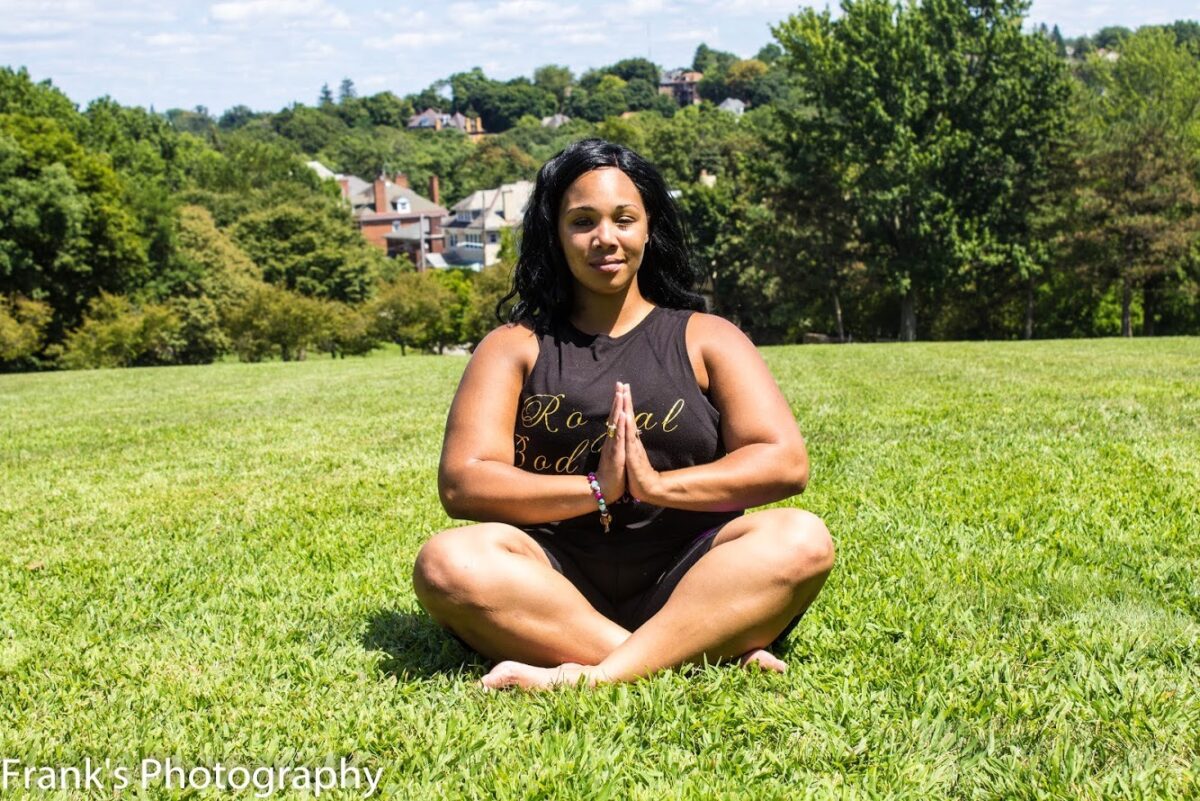By Aquene Watkins-Wise, Royally Fit
As self-care trends increase and many people become more aware of their health thanks to a global pandemic, we are also experiencing a popularization of holistic wellness. Seeking a whole body approach to health, holistic wellness considers ways in which our body’s systems are interdependent, and looks for ways to provide support, therefore alleviating ailments. A primary tenet of holistic wellness is preventative lifestyles, often encouraging both food and plants being used for their medicinal properties. “Plant medicines help to stimulate the body’s own innate capacity for restoring and maintaining health” (J.Power). What an amazing notion, to think that we can use what is grown in our gardens not only to remedy common ailments, but also to balance our overall body systems!
The most commonly known and widely accepted internal use of herbs (outside of cooking), is through tea blending. Whether you prefer them hot or iced, teas have long been enjoyed throughout history; when you know the medicinal properties of herbal tea, it’s no surprise that it is the beverage of choice for so many! Unlike traditional teas, however, herbal teas are created when herbalists, like myself, purposefully blend the dried roots, seeds, flowers or leaves of a plant. Each added herb is carefully chosen to complement the others, enhancing overall flavor and amplifying the healing intentions of that tea. Commonly enjoyed, and long revered for its medicinal properties, is peppermint tea. While potent on its own, I also add things like echinacea, eucalyptus, red clover, and calendula to my peppermint leaves to create a powerful immune boosting tea blend. It is important to remember that each person’s body reacts differently to individualized herbs, and therefore, it is imperative to research before trying something new and to consult your primary care provider if you’re on any medications prior to introducing new herbs to your system.
Aromatherapy is another holistic approach to healing, which utilizes plant extracts, such as essential oils, to aid in not only relieving symptoms but also in providing mental and emotional comfort. “Aromatherapy can assist with relaxation and calming, reducing stress, lowering pain, tension, anxiety, and depression, and can also be energizing, uplifting, sedating or stimulating, promote health, heal injuries, improve the immune system, and restore physical, mental, spiritual, and emotional well-being. Many oils have antibacterial, antiviral, and antifungal qualities” (E. Vadnais). With such a wide array of uses, it’s no mystery that aromatherapy is becoming more popular, especially in conjunction with integrative therapies. Of course, with all things, there must be precautions taken. For example, essential oils are too potent to be used directly and should be diluted first; water is a great base when diluting for a diffuser, and carrier oils are perfect to use when diluting for topical application. Aromatherapy massages, herbal salves, herbal baths, skin care products — the list of ways you can use herbs on your skin is pretty lengthy! As the body’s largest organ, it’s no surprise that topical use of herbs for healing is also common. While many other countries have long been using these Ayurvedic herbs, mainstream American culture is just starting to catch up, as we are learning of harmful chemicals and synthetics used by many run-of-the-mill manufacturers. When considering the topical use of herbal remedies, it’s important to also consider that they are most potent with respect to localized healing. That means that if you apply an itch cream to your hand, for example, it will treat that area specifically, but it won’t spread the healing to your arm. Because our skin is the first line of defense for our body, it’s also important to note that not everything applied to the skin is absorbed by the skin. With that in mind, we shouldn’t expect miracles to be worked solely through topical application of herbal medicine.
Trusted as one of the oldest forms of healing, herbal medicine can be administered a plethora of ways. Whether you’re just dipping your toes into the world of herbal medicine or you’re a seasoned practitioner, there are myriad wellness benefits that can be experienced through drinking tea, utilizing aromatherapy, and topical application of herbs. “Patients are advised to ensure the safe use of herbal therapies by deciding on health goals; informing themselves on efficacy, safety, interactions, and usage of the medicine; selecting therapies that are likely to achieve their goals; having a correct diagnosis before using the therapy; consulting reputable practitioners; informing the practitioners about all the remedies they are using; monitoring the effects of the remedies, both positive and negative; waiting patiently for effects to become noticeable; and adjusting doses as needed to accommodate surgery, illness, or changes in conventional therapy” (P.D. Shenefelt). Once you’ve determined the appropriate method(s) of herbal medicine, begin doing your research and dive in! If you’re not sure where to begin, stop by www.RoyallyFitllc.com for organic herbal teas, aromatherapy products, and topical healing products, all of which have been locally made in small batches!
Aquene Watkins-Wise // Royally Fit, LLC.
East End Food Co-op Community Partner
Discount Offered to EEFC Members: 15% off
Sources:
Power, Joie. “Aromatherapy: A Branch of herbal medicine”
Shenefelt, PD. Herbal Treatment for Dermatologic Disorders. In: Benzie IFF, Wachtel-Galor S,editors. Herbal Medicine: Biomolecular and Clinical Aspects. 2nd edition. Boca Raton (FL): CRC Press/Taylor & Francis; 2011. Chapter 18.)
Vadnais, Emmy. “Aromatherapy Can Enhance Health and Healing”



Leave A Comment